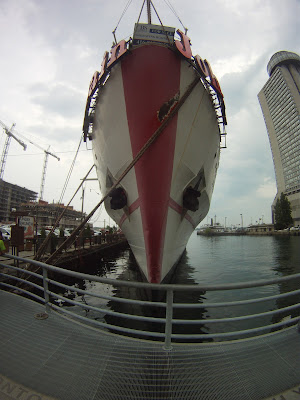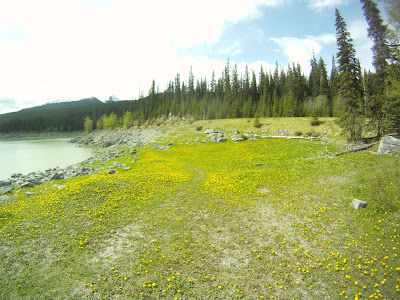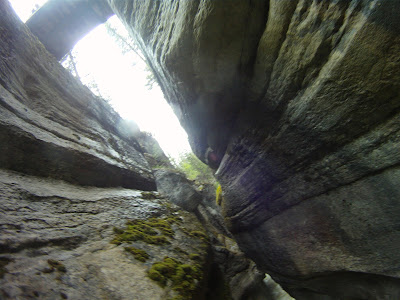Ontario is a Huge province, even by Canadian standards. I planned to attempt to fit the entire province into a single 'blog entry, but this was futile. Two 'blog entries is still not quite enough, but that is what I must do...
The penultimate day-and-a-half aboard the train was spent entirely within Ontario, travelling through forest which was interspersed by a great many lakes. I have no idea how the designers of this railway could ever have even started to survey for planning to build this railway. It seems to pass through otherwise completely impenetrable forest for thousands of kilometres. It must have been like digging a tunnel through the forest.
The section of Ontario just north of Toronto is known as "cottage country" as it is where a great many inhabitants of the Greater Toronto Area have "cottages". These are not cottages as we know them in England, however, but holiday homes and weekend getaways that range from mere shacks in the woods, to castles on lakeshores.
As we got closer to Toronto, the landscape became more and more developed and the cottages became grander and more castle-like, and very soon we were passing through suburbia. I stepped down from the pampered life aboard the train, into Canada's larget metropolis.
It was immediately clear, wandering the streets of Toronto that there were a multitude of national groups living there. The fact that the European Football championships were on at the time I was there made this even clearer: cars passing by were often bearing the flags of Portugal, Greece, Italy and such like. Perhaps this happens even when football (or soccer, as it must be called over here) is not an immediate concern.
I spent a few days in the city wandering around, sampling some of the varieties of cuisine and enjoying the contrasting architectural forms.
The latter range from a university campus very reminiscent of parts of Oxford and Cambridge, to a great crystalline window crashing through the carcass of a grand 1920s building. And towering over all are the downtown skyscrapers, themselves dwarfed by the CN tower, ever present on the horizon.
I spent a day away from the city on the typical tourist's pilgrimage to the Niagara Falls. As these falls are mythologized beyond realism, I was not expecting to be impressed, but surprised myself. I fortunately made the decision to walk to the falls along the river from the bus station, rather than taking a city bus or walking through the town. This gave me a view of the deepening canyon, and a more naturalistic approach to the falls. The American falls, which were the first that I saw were incredible enough, but the horseshoe falls on the Canadian side of the river are as phenomenal as their reputation would have one believe. It was a sunny day, which gave rise to an aspect of the place I had never cnsidered: there is a permanent rainbow in the vicinity of the falls! I was surprised how close it is possible to get to the top of the falls, and felt no need to engage in the tourist activities such as a walk down into the tunnels behind the falls, or a boat trip on the river below. Instead was content to sit under a tree near the falls and read. In staying still for a long time, I became aware of the most amazing phenomenon: as the sun sank towards the horizon, the rainbow bubbled its way out of the gorge.
I then wandered into the built-up area adjacent to the falls, and
experienced the most dire of geographical culture shocks. I fancied I
was suddenly in Las Vegas or Blackpool or some such monetary quagmire.
Everywhere there were towering blocks of casino hotel and billboards
encouraging me to part with my money in various ways, by spending an
evening with this or that minor celebrity or attending the tackiest
seeming side attractions. Someone had mentioned to me that one thing
worth visiting was the nightly light show at the falls, but after the
rainbow's most exquisite natural light show, I felt no need to wait
around for the man-made projections on the falls in the evening, and got
the early evening bus back to Toronto.



























































